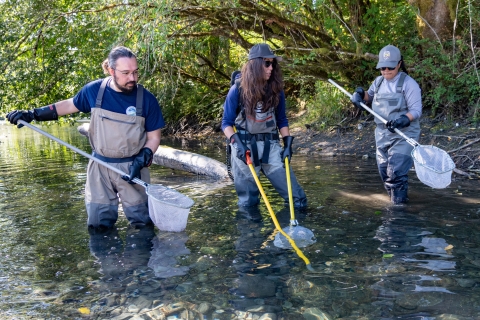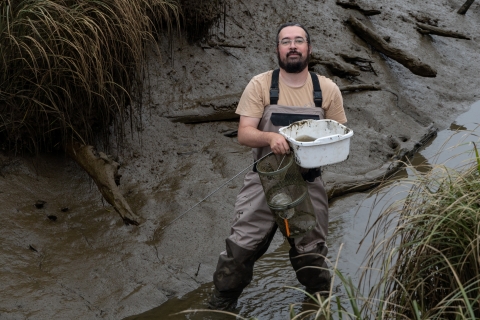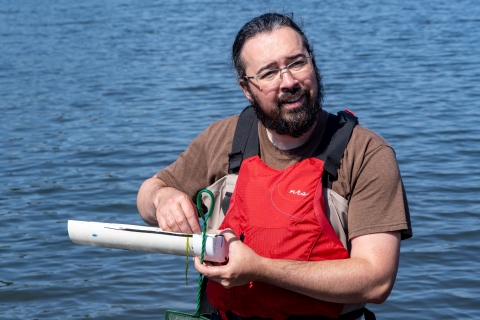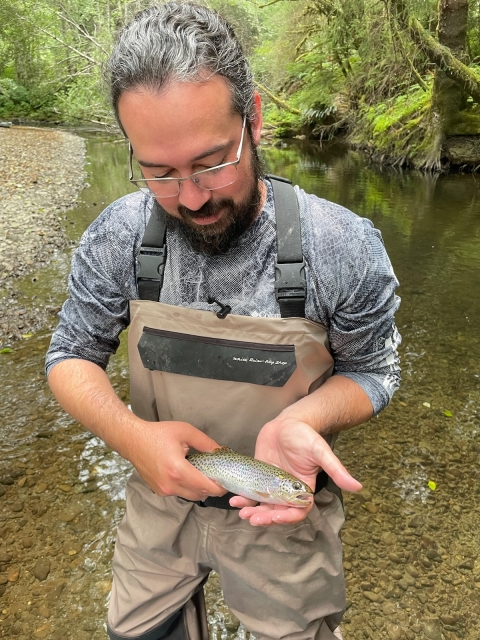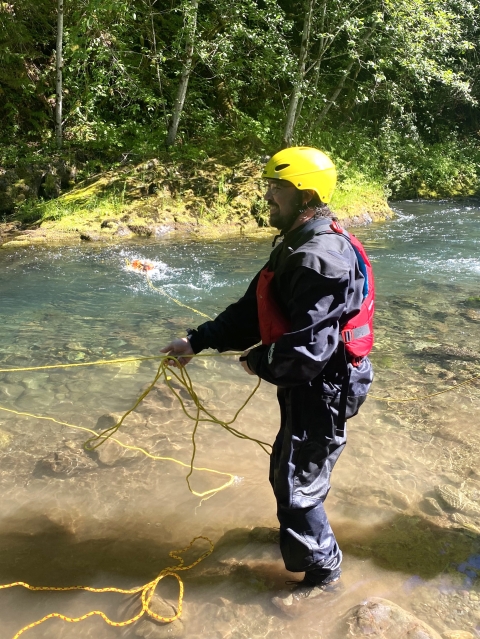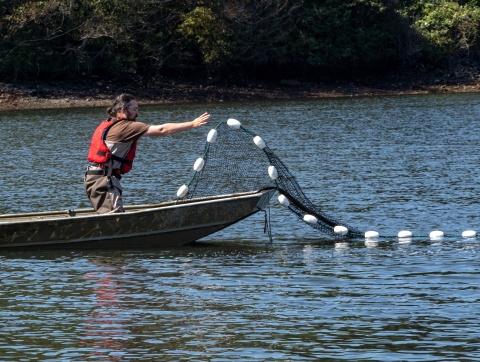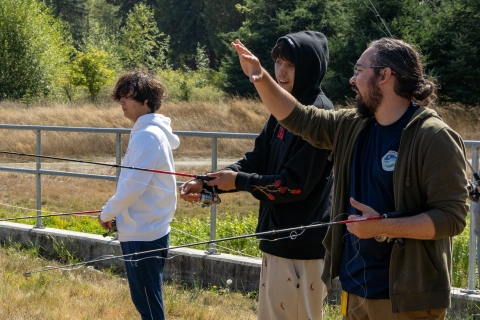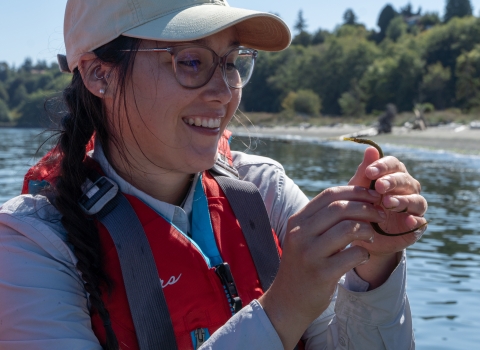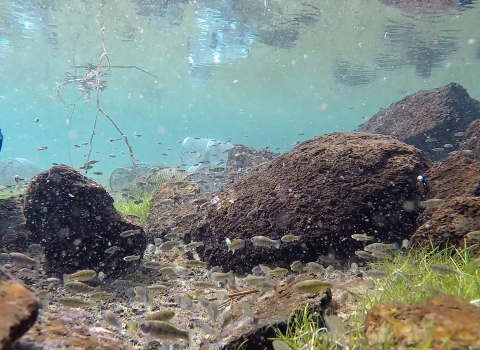By Chris Lage, Bureau of Indian Affairs WaterCorps Intern at the Pacific Region's Western Washington Fish and Wildlife Conservation Office
Here we are miles up a dirt road, and I’m eagerly waiting for her to cut a footlong horizontal incision into the base of a cedar tree. Now that the cut is complete, she uses her fingertips to slowly separate the bark from the tree; once there is enough peeled off for me to grab, I’m asked to give the bark a lift and pull. Before I knew it, a 20-to-30-foot strip of cedar is falling from high up in the tree. As she is rolling it up and we begin moving to another nearby cedar tree I ask her, “Grandma, why don’t we take more bark from that tree instead of finding another one?” Her response to me as if already having the answer in mind was, “We only take what we can so that the tree can heal from it.”
That is one of my earlier memories and oldest lessons I was taught while we were harvesting cedar that my KayəɁ (grandmother), Sharron Nelson who is a master basket weaver, would later use to weave baskets or cedar hats out of. My name Is Christopher Lage, and I’m a Puyallup Tribal member. Growing up learning to respect and take care of the land and resources is what has led me toward conservation. Similarly, my passion for fishing is a big factor that led me on the road toward working in fisheries conservation. Fishing is not only a hobby, but a way of life.
There I was, only a month into my WaterCorps internship with U.S. Fish and Wildlife Service, and I’m knee deep in the river with rubber gloves on and a net in my hand. As I try to move into a good position where I can have the best angle to net the fish, my feet sliding off algae covered rocks as I attempt to get a strong base underneath me, I’m being told that I need to be very quick with the net because I will only have a few seconds to capture the sculpin. I’m feeling the pressure since it’s my first-time electrofishing, which is a technique where a small electrical current is used in the water to temporarily stun the fish so they can be netted and studied before we release them back into the river. I’m filled with uncertainty if I’m even going to be able to see the fish in time to net it. Then, before I could gather myself, we were at our first log, and I hear the call, “shocking!”. This signaled we were about to run electrical current through the water, followed by a singular beep from the backpack. Almost as soon as we started a fish darted out from underneath a submerged mass of roots and was immediately stunned by the electrical current. I wasted no time and made a lunge with my net directly at the fish. Just as quickly as the fish appeared, I had netted the sculpin. I looked up and it felt as though everyone was looking at me. I convinced myself that the look of shock in their expressions was because I had been so quick to react and net the sculpin on my first attempt. I will never forget how I felt, it was a buildup of nervousness to not miss the first fish, followed by a mix of relief and satisfaction that I was successful. This gave me confidence as we worked a combination of different pools and riffles doing population assessment.
Although that moment stuck out to me, there were several other opportunities I’ve had for firsts. Highlights included pumping the stomachs of non-native game fish for diet sampling, then later in the lab looking under a microscope and identifying the insects and fish they had eaten, to struggling to move through foot-deep mud to set and pull crab traps to find and remove invasive European green crab. At times it took me a bit to digest, and I would need time to process all the smaller details and purposes of these projects because I didn’t want to miss anything. Being able to contribute toward data collection for another project on the Puyallup River and learning how it’s being used in a good way is something I’ve never had the privilege of doing before. It felt good to have firsthand experiences in a field I’m interested in, as well as be involved with Tribal partnered fisheries that are close to home has been an eye-opening experience for me.
Over the past 6 months, the skills and experiences such as fish identification, habitat surveys, snorkel surveys, beach seining, invertebrate sampling, and technical skills that I’ve gained were valuable to me and further provided motivation to continue my educational and professional goals. I plan to go back to school this winter to finish my Associates of Arts in Biology Degree. Then afterwards I can continue pursuing the next milestone, such as future job opportunities in related fields in hopes this will lead me on the road toward someday working for or alongside the U.S. Fish and Wildlife Service or for my Tribe’s fisheries. That way I could not only help support our important fish populations but keep it a food source and a way of life for future generations.
Editor note: The Tribal WaterCorps program is sponsored by the Bureau of Indian Affairs in partnership with Conservation Legacy. The Washington Fish and Wildlife Conservation Office is one of several WaterCorps host sites throughout the country.

